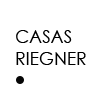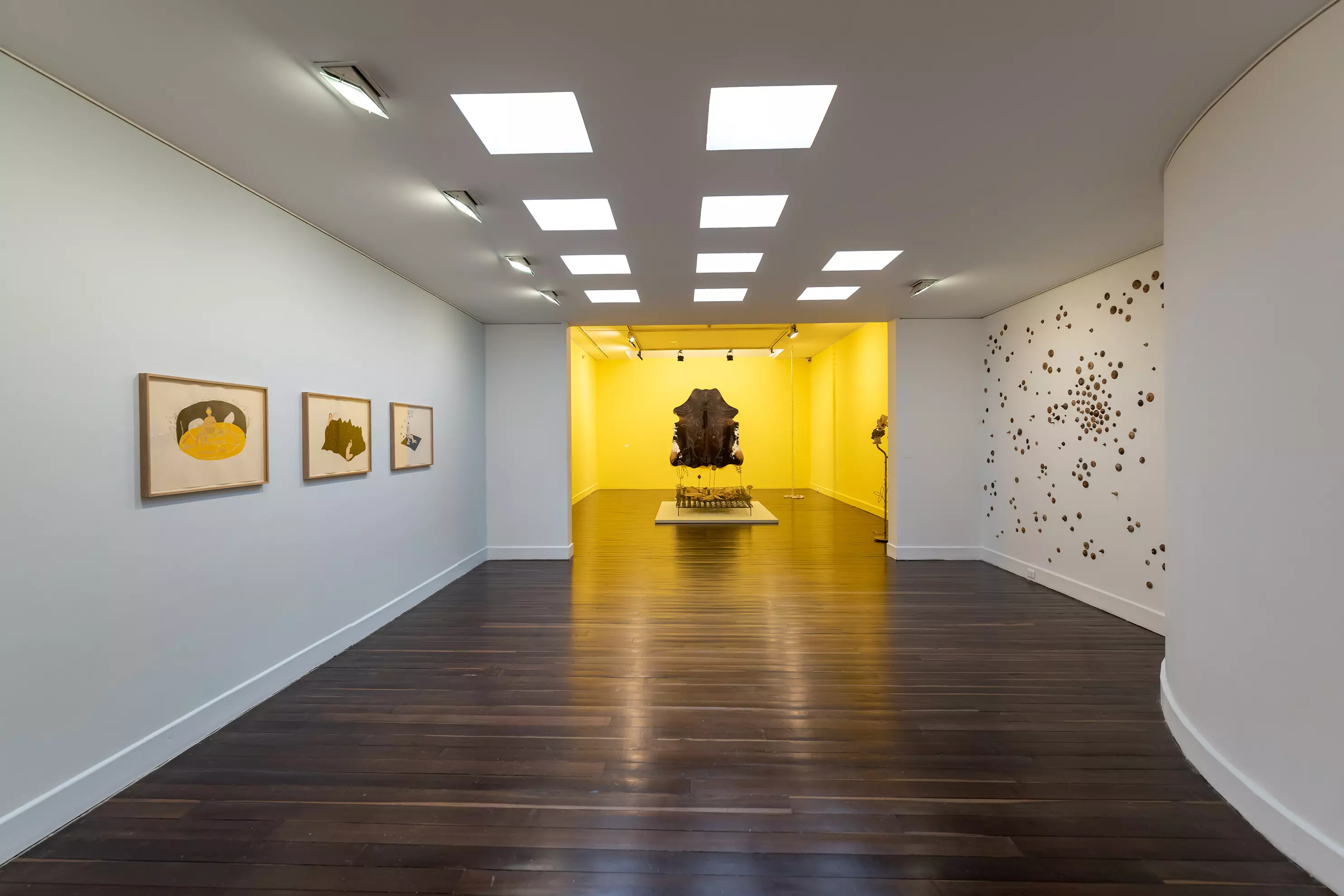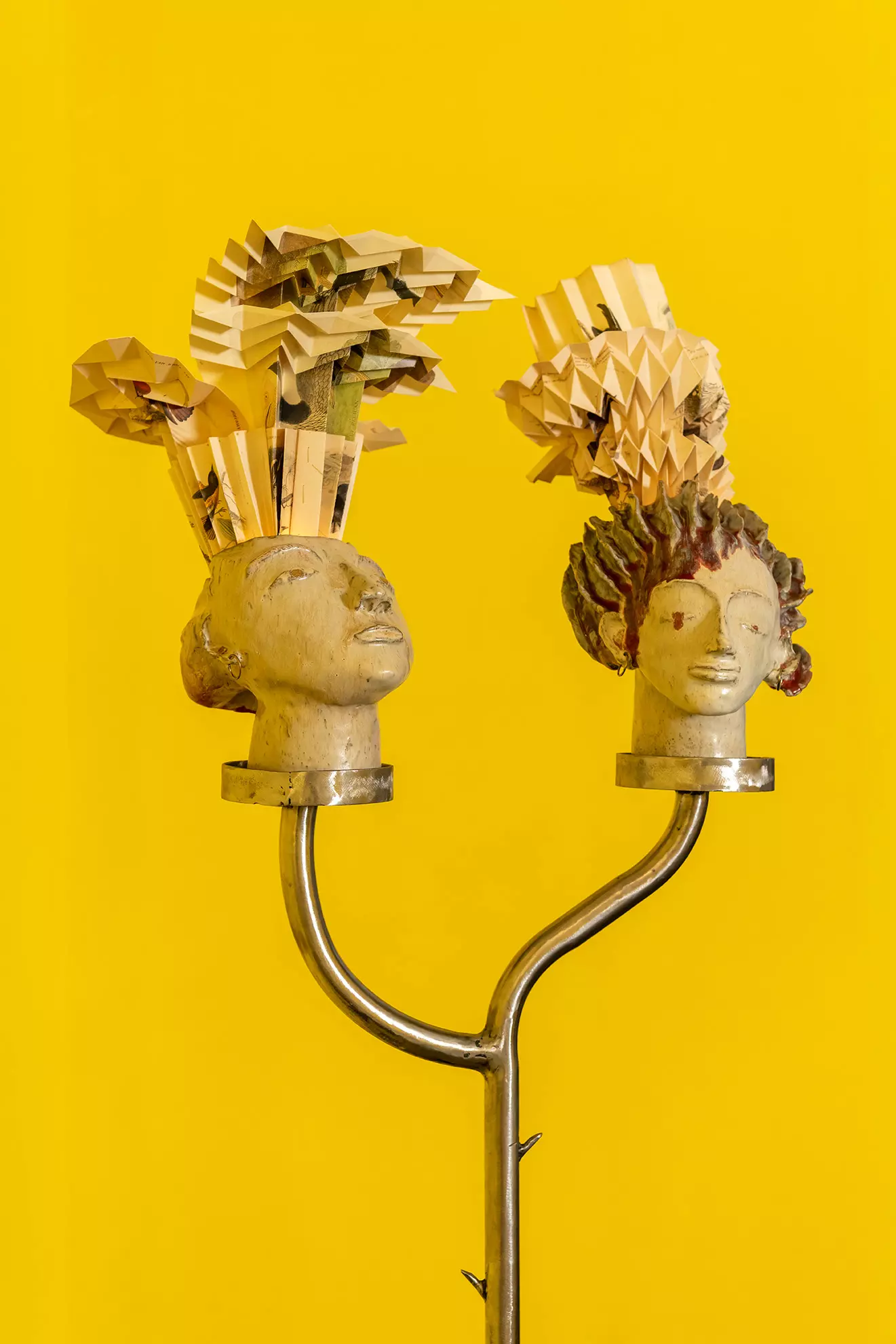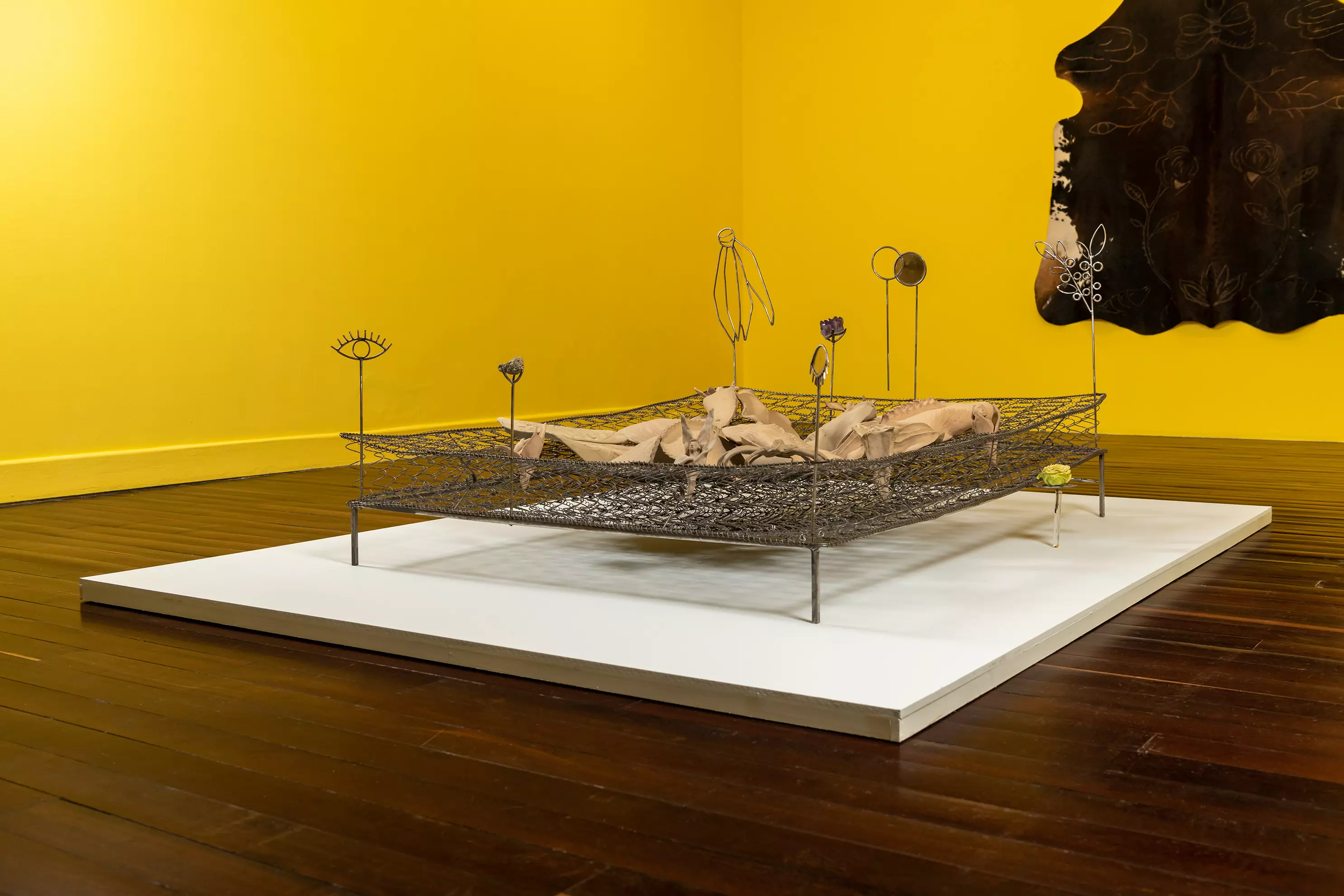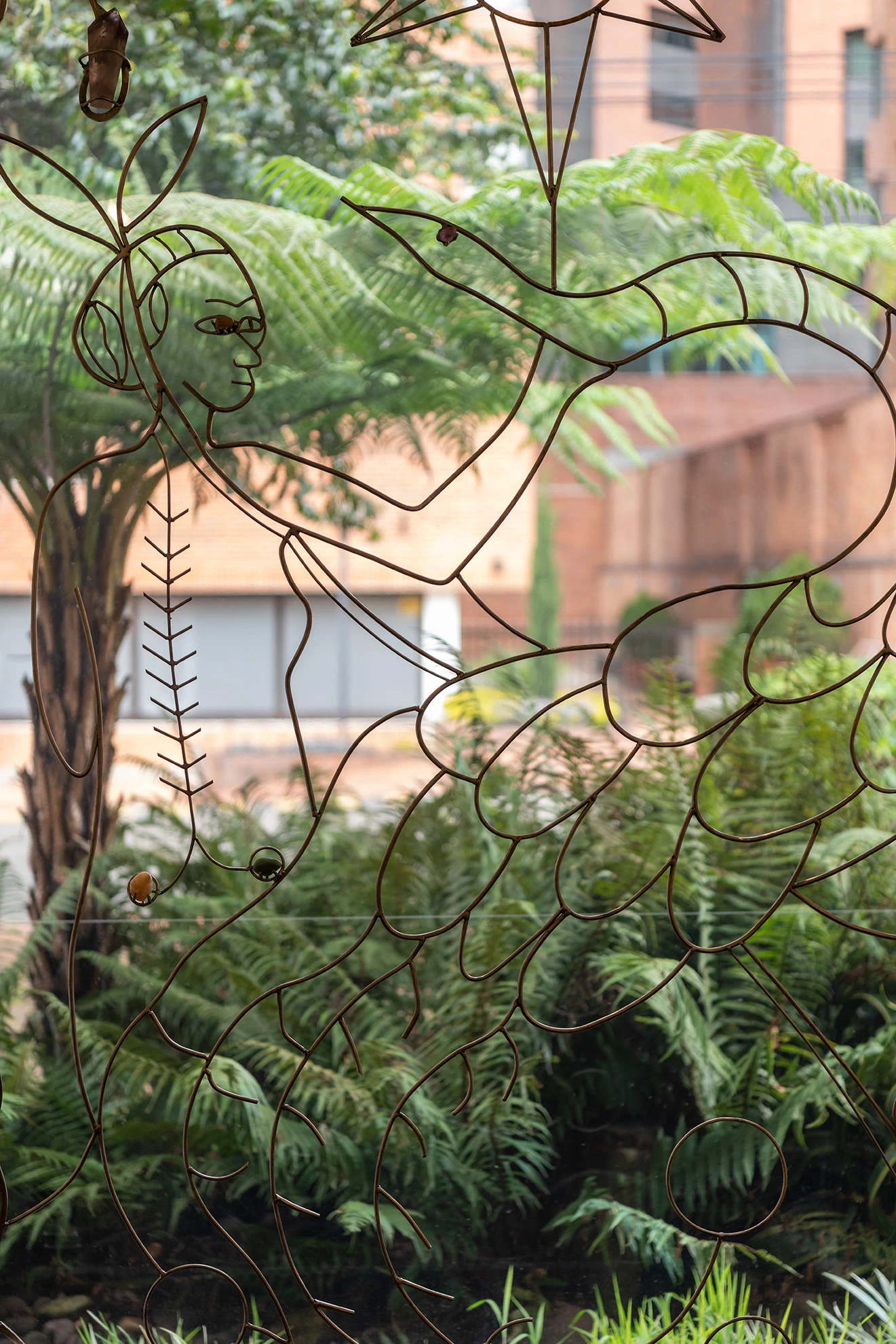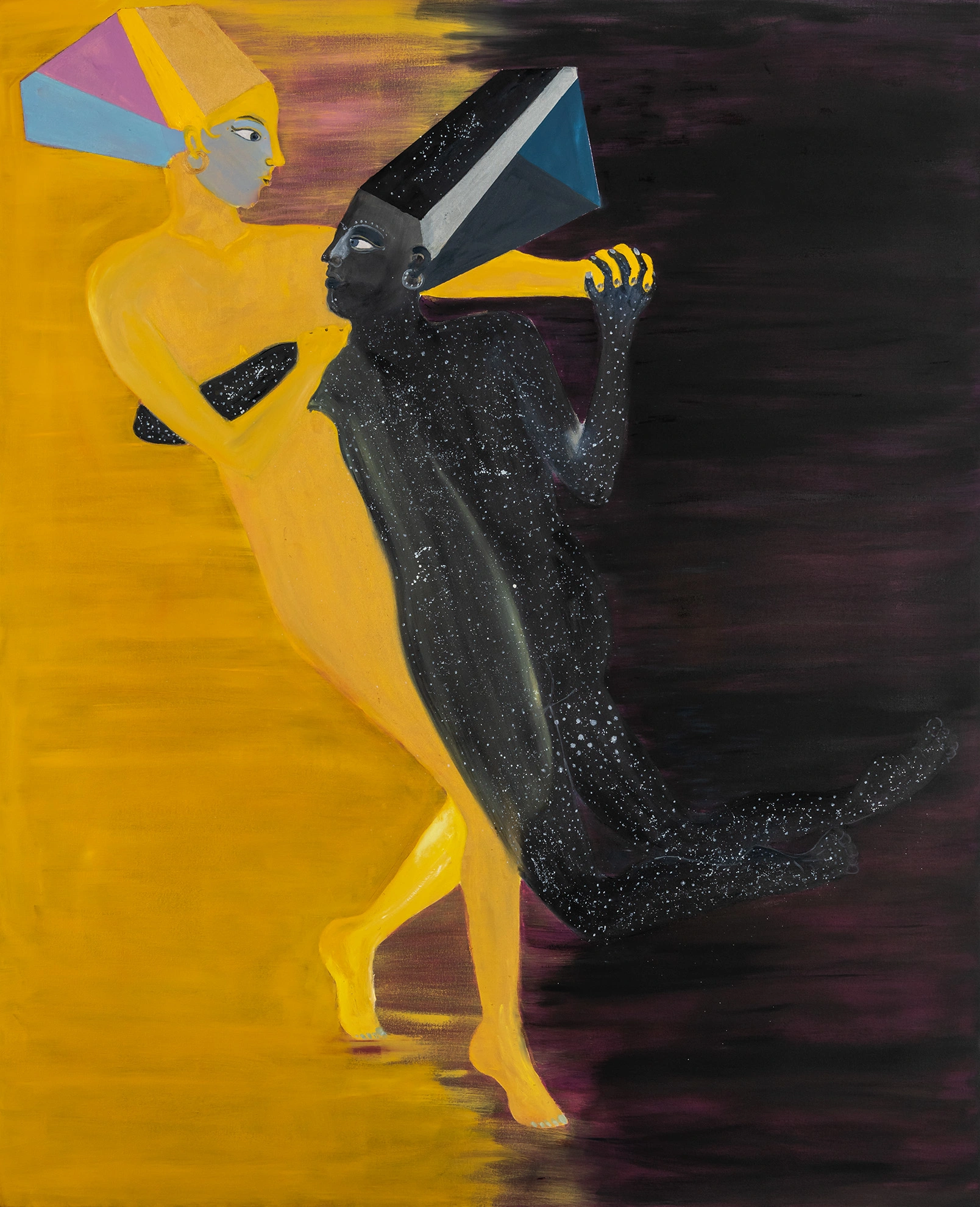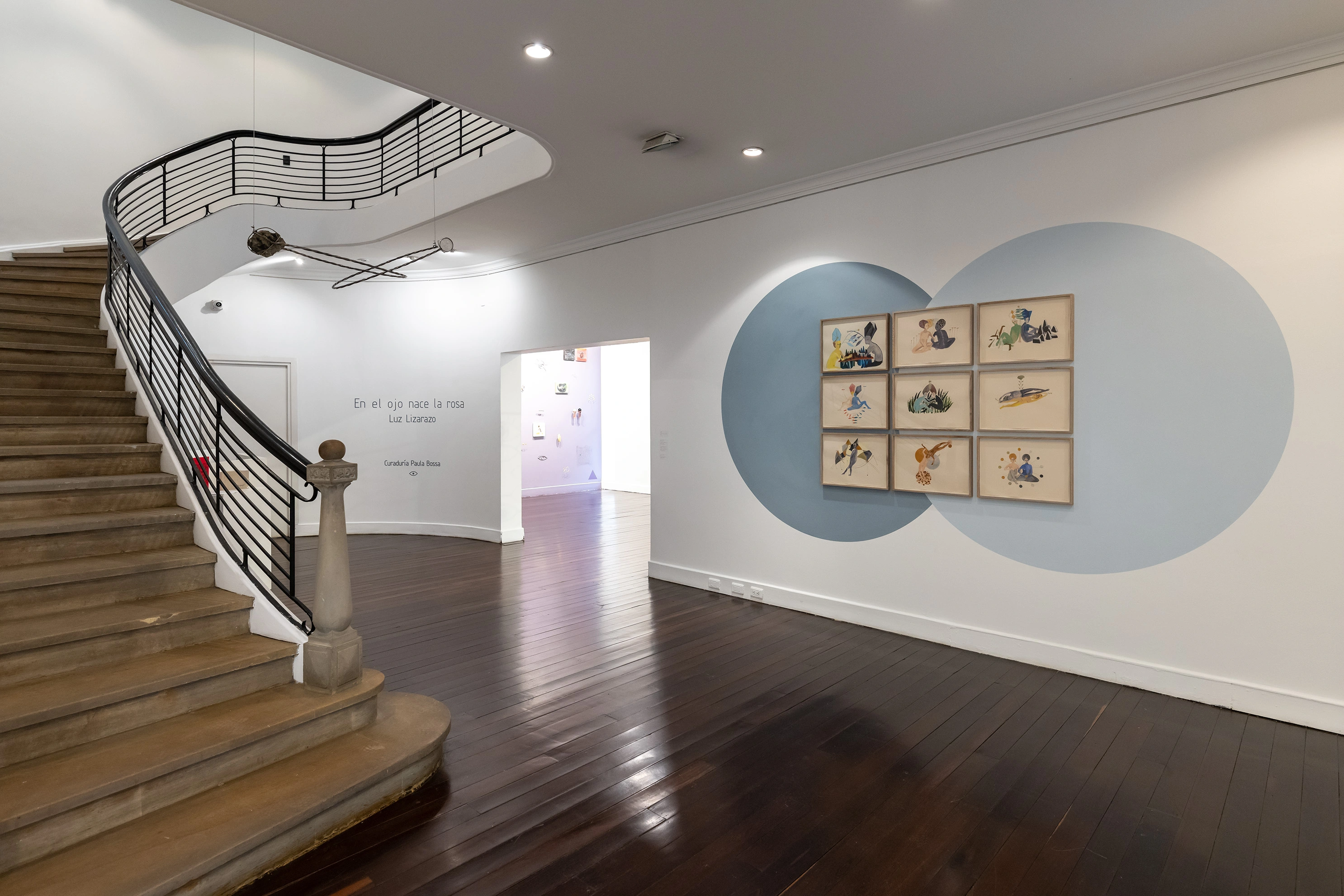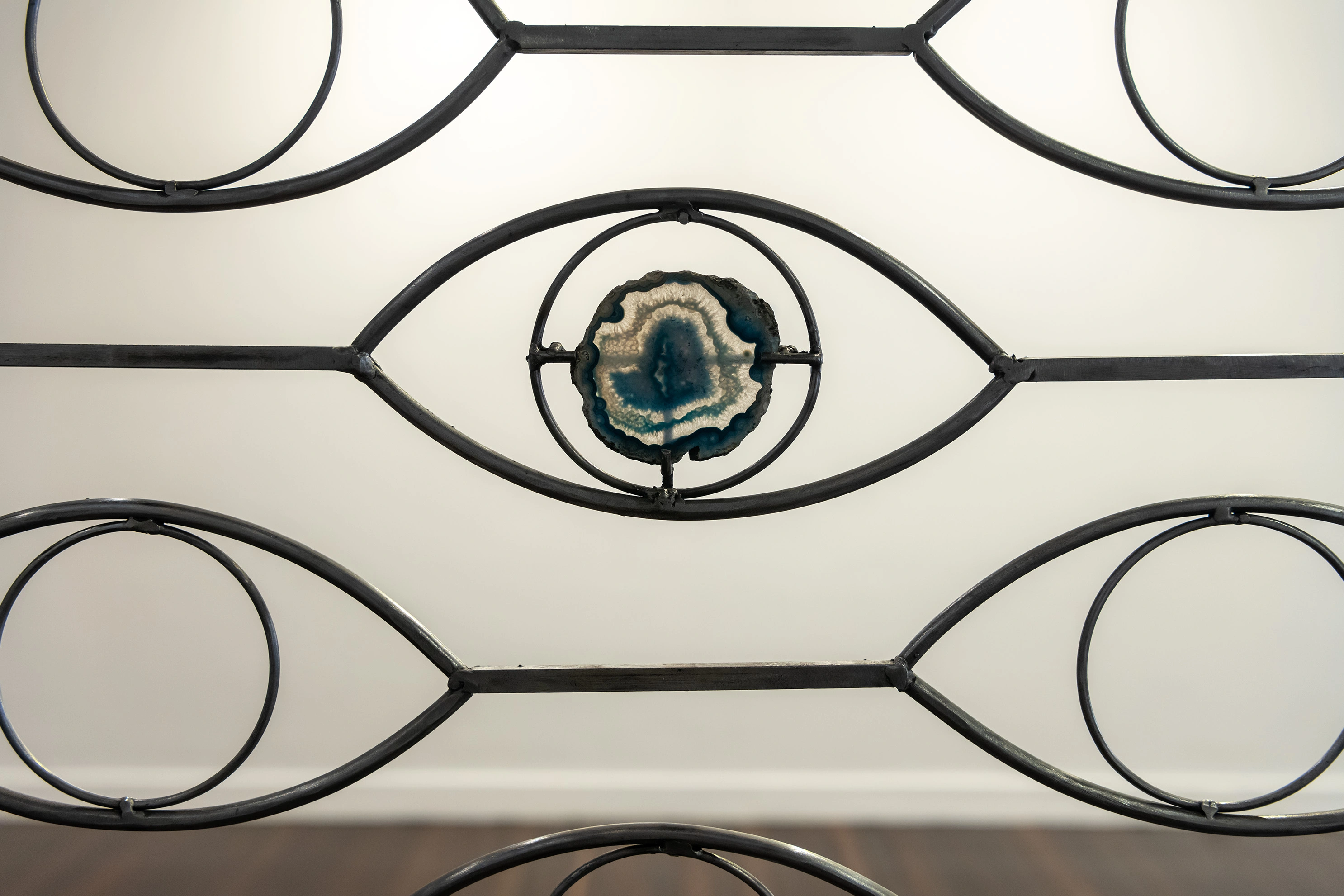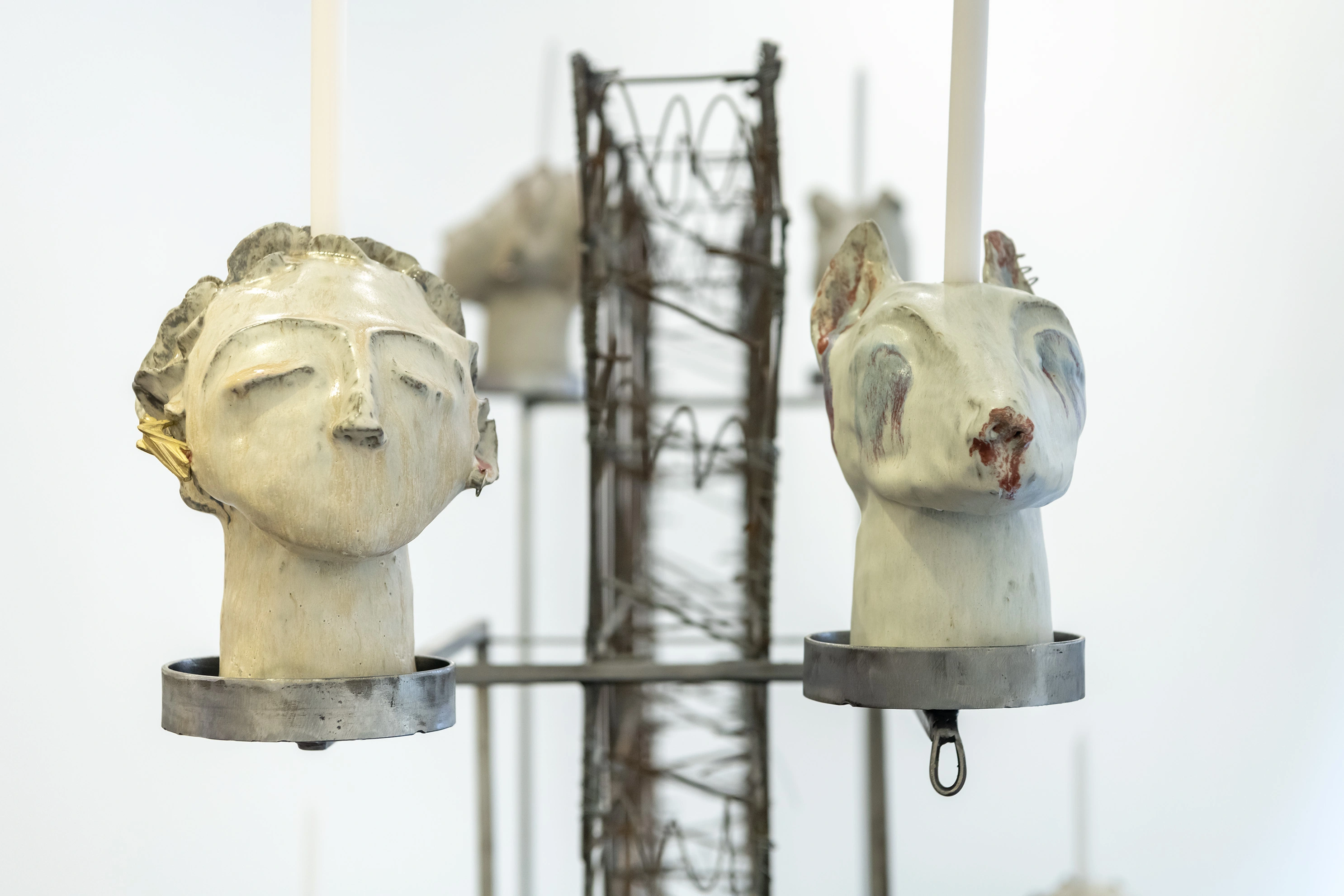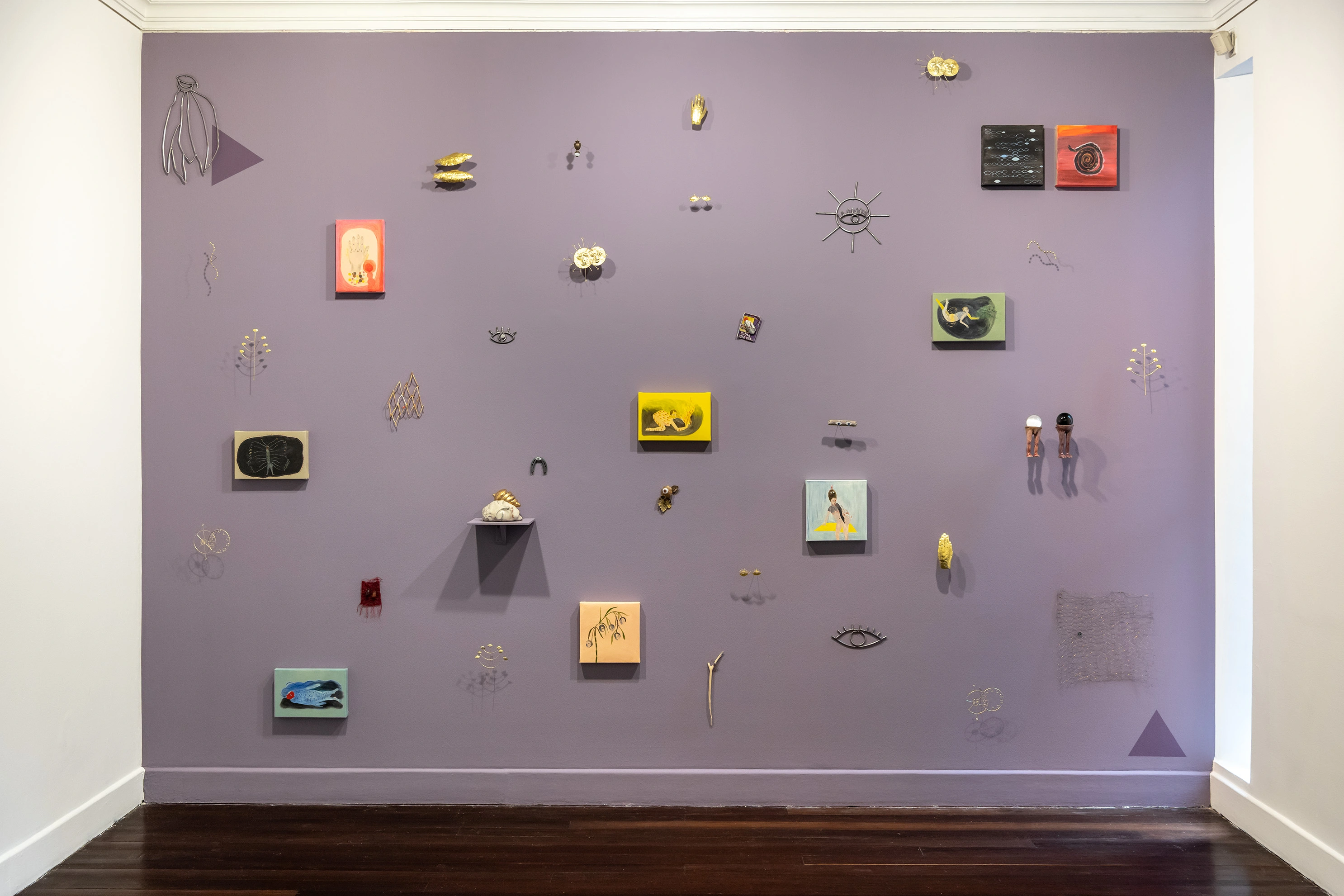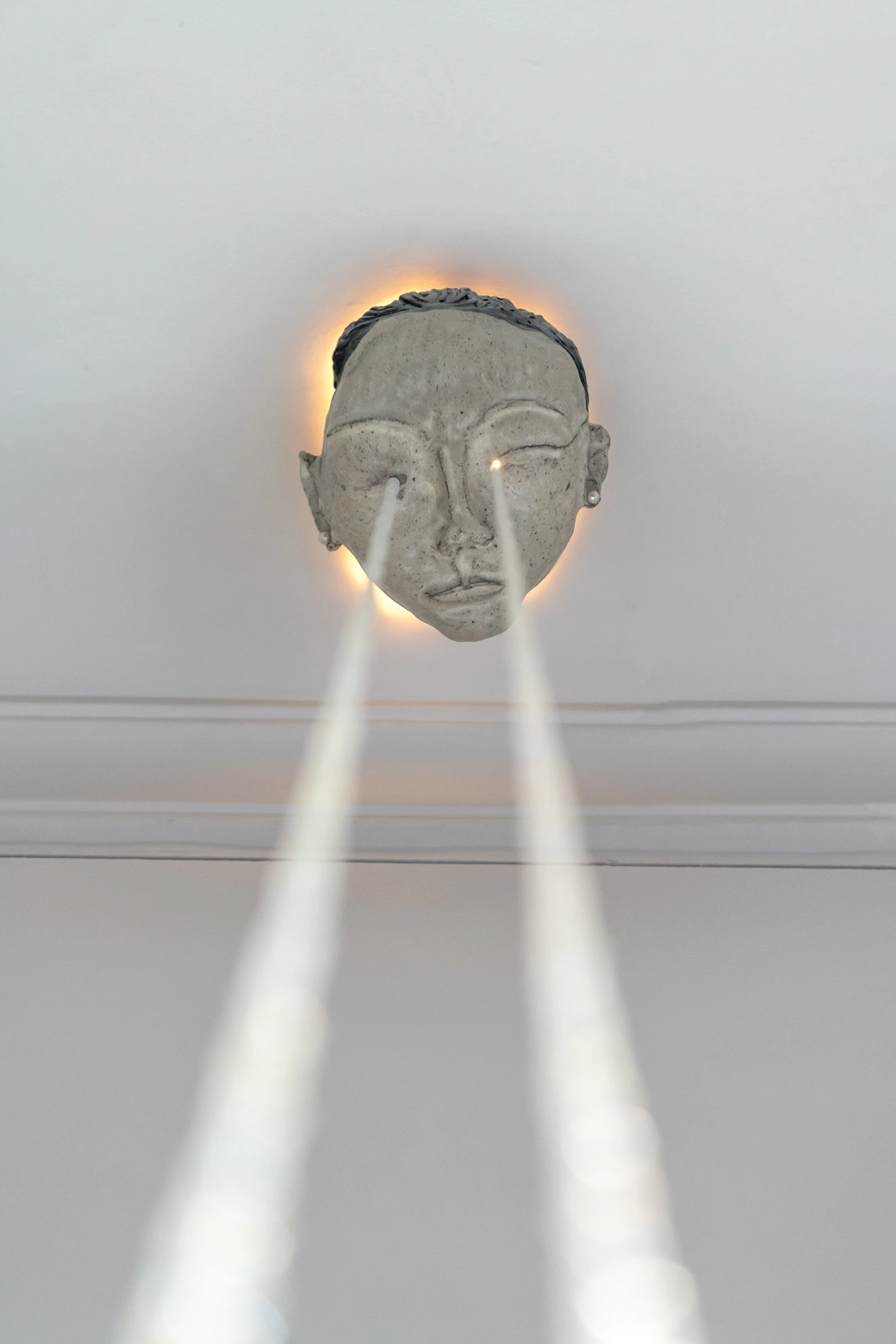En el ojo nace la rosa
“The dark cave you fear to enter is where your treasure lies.”
Joseph Campbell
In the eye is born the rose – Luz Lizarazo
The obsession of Luz Lizarazo to understand the mystery of human existence, coupled with a feeling of emotional emptiness that invaded her for many years—the result of a devastating loss—led her to a spiritual quest that has driven and permeated her artistic practice for more than two decades. That attempt to find meaning in life is now palpable in her exhibition “In the eye is born the rose,” which, in its conception, is a dialogue of polarities, a face-to-face encounter between light and darkness, Day and Night, two aspects of the Self that are integrated through the metaphor of the eclipse, providing a deep understanding of life.
With an artistic trajectory of more than thirty years, Luz Lizarazo today chooses to look at her reality without distortions, placing her inner search, with all that it entails, before the constant exploration of the external world. This insistence on approaching the invisible aspects of life without concealment leads her to create a sort of iconography or personal mythology, which, according to mythologist and writer Joseph Campbell, “is not ‘myth’ in the sense of a ‘false fantasy story’ but metaphorical language about direct experience.”[1] Thus, in Lizarazo’s mythology, specific symbols prevail, such as the naked female body, the eye (open and closed), the bed, animals, fire, earth, water, and air, that, in the manner of mantras, are revisited and repeated by the artist over and over again, as fundamental tools that bring her closer to her personal enlightenment process.
The plastic inquiry of Day begins with the conformation of an intimate space, illuminated and warm, in which the presence of a bed stands out, decorated with crystals and protective plants from where ceramic torsos and representations of goddesses sprout, reborn from the center of a flower. The bed, being “the place where everything happens,” becomes an intimate territory, the epicenter of pleasure and kundalini energy,[2] the support of the body as a sacred temple that lives and then dies. Day, in Lizarazo’s words, “is the manifestation of life” with all its events; it is the moment when plants bloom and emerge from the most unexpected corners, the fluid and spontaneous movement of the female body, the nipples feeding a newborn, the human being exalting the animals.
Night, in contrast, invites us to pass through a portal dressed in open and closed eyes—symbols of external vision and internal light—that leads us to a deconstructed altar that sacralizes the exhibition room. It abounds with paintings, found and intervened objects as offerings and rituals, representing Lizarazo’s true nature. Likewise, the sacredness of the space is accentuated with a sort of candelabra, whose arms hold busts of animals, women, and hermaphrodites in a deep meditative state. With a candle, the artist points to the crown chakra—the energetic center of spiritual connection located at the crown of the head—of each being, reiterating her surrender and surrender to her own awakening of consciousness.[1]
Luz Lizarazo uses the metaphor of the eclipse to refer to that constant dance, to that “complex dialogue of differences”[3] between light and darkness in which the life of every human being takes place. Thus, this play of opposites serves as a catalyst, like a firefly that seduced the artist with its beautiful glow amid darkness, to honor herself and her artistic work and continue embracing her spiritual path.
[1] Pinkler, Leandro, “Prólogo” [“Prologue”], in Joseph Campbell, Mitos de la luz. Metáforas orientales de lo eterno (Buenos Aires: Marea Editorial, 2005), p. 12
[2] According to Hinduism, kundalini is the primordial and creative energy that resides in the sacrum in the form of a serpent.
[3] Aurora Morera Vega, El diálogo de polares en Gestalt [The Dialogue of Polarities in Gestalt]. https://gestaltnet.net/sites/default/files/articulos/dialogo-polares-gestalt.pdf
Paula Bossa
Curator
Open to the public
Hours
Monday to Friday: 9:00 am - 5:00 pm
Saturday: 11:00 am - 2:00 pm
Sunday & Holidays Closed
